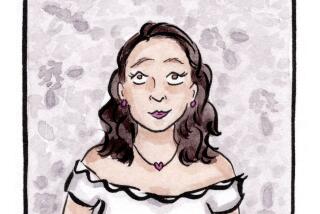What happened to Mindy Kaling’s body? Why Elle shouldn’t have cropped her cover photo

Mindy Kaling may love her Elle magazine cover, but Internet critics have called foul on the close-up shot, accusing the magazine, again, of “fat-ism” for cropping her curvy body out of the image.
Kaling’s cover is one of four for Elle’s “Women in TV” issue. The others, by contrast, feature full body shots of the mag’s slimmer cover girls, Zooey Deschanel, Allison Williams and Amy Poehler. As the Gloss’ Julia Sonenshein questions: “I don’t entirely understand the intention behind releasing four covers that act as a set, but painting one subject specifically as the odd-man-out.”
Elle defends the cover, telling E! News that “Mindy looks sexy, beautiful and chic. We think it is a striking and sophisticated cover and are thrilled to celebrate her in our Women in TV Issue.” And as Time’s Eliana Dockterman pointed out, we don’t know the whole story: “For all we know, Kaling and her publicist may have had the last say on this picture.”
PHOTOS: From Miley Cyrus to that Pantene ad, 5 feminist arguments that sparked debate in 2013
But that doesn’t mean we should quiet the backlash, in general, against influential publications that leave curvy and full-figured women out of the picture.
“When a full-figured woman or a woman of color is chosen as a cover girl it is a big deal, because of the impact it has on those who feel confined by these often negatively stigmatized traits,” the Huffington Post’s Lauren Duca argues. “Put simply, seeing someone who resembles yourself on the cover of a magazine garners a feeling of positivity and acceptance. Seeing someone who resembles yourself cropped off feels like more social exclusion.”
In a 2013 Times Op-Ed about weight discrimination, Abigail Saguy called for “increasing tolerance and appreciation of diverse body types.” She wrote:
“Yale researchers have shown that weight discrimination in the United States has increased dramatically in the last decade and is now comparable in prevalence to rates of reported racial discrimination, especially among women. Multiple studies have documented weight bias in employment, healthcare, education and public spaces — unequal treatment based on stereotyping fat people as lazy, unmotivated, sloppy and lacking in self-discipline and competence. Heavier women are not only less likely to be hired and less likely to earn a higher salary compared with their similarly qualified thinner peers, but they are also less likely to marry or to marry a high-earning spouse. Unlike thinner women, who can more easily climb the social and economic ladder, heavy women face the prospect of downward social mobility.”
Obviously, the way women are portrayed by influential media outlets has a huge impact on our culture and its standard of beauty and acceptability. That’s why it was especially refreshing to find out from Page Six and E! on Wednesday that Vogue, a fashion magazine that practically invented the concept of thinspo, would be featuring “Girls” star Lena Dunham on its February cover. Fingers crossed that Dunham’s curvy figure stays in the picture.
ALSO:
Liz Cheney’s problem wasn’t her famous name
From Miley Cyrus to that Pantene ad, 5 feminist arguments that sparked debate in 2013
Follow Alexandra Le Tellier on Twitter @alexletellier and Google+
More to Read
A cure for the common opinion
Get thought-provoking perspectives with our weekly newsletter.
You may occasionally receive promotional content from the Los Angeles Times.






